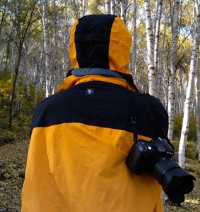Built according to the Wei and Jin tombs of the "world's largest underground gallery", the main building of the Han Dynasty style is very simple and simple. Three large exhibition halls display thousands of historical relics of various kinds, spanning 5,000 years of history. The scale is rare in the west and even in the country.
;
Silk Route Museum Review
4 /518 Reviews






4/5
Silk Route Museum
Posted: Jun 15, 2018
Like
Popular Destinations
Seoul Travel | Spain Travel | Greece Travel | Bangladesh Travel | Wolverhampton Travel | Sharm El Sheikh Travel | Kos Travel | Florence Travel | South Korea Travel | Stoke-on-Trent Travel | Philippines Travel | Wuhan Travel | Lahore Travel | Naples Travel | Marrakech Travel | Tasikmalaya Travel | Nevsehir Travel | St Ives Travel | Jinhua Travel | Miami Travel | Koh Yao Travel | Laos Travel | Batticaloa Travel | Tongchuan Travel | Loudoun County Travel | Bocas del Toro Travel | King's Lynn and West Norfolk District Travel | Anhua Travel | Honghe Travel | Forster Travel
Recommended Attractions at Popular Destinations
Bangkok attraction near me | Tokyo attraction near me | Manila attraction near me | Hong Kong attraction near me | Seoul attraction near me | Taipei attraction near me | Los Angeles attraction near me | New York attraction near me | Shanghai attraction near me | Kuala Lumpur attraction near me | Shenzhen attraction near me | Osaka attraction near me | Singapore attraction near me | London attraction near me | Guangzhou attraction near me | San Francisco attraction near me | Beijing attraction near me | Macau attraction near me | Bali attraction near me | Paris attraction near me | Orlando attraction near me | Jakarta attraction near me | Ho Chi Minh City attraction near me | Chicago attraction near me | Phuket attraction near me | Toronto attraction near me | Cebu attraction near me | Dallas attraction near me | Istanbul attraction near me | Seattle attraction near me
Popular Attractions
Park Güell | KL Hop-On Hop-Off | La Pedrera – Casa Milà | Palau de la Música Catalana | Disney California Adventure Park | Samui International Muay Thai Stadium | Vana Nava Water Jungle | Colosseum | KL Bird Park | Guinness Storehouse | Kuala Lumpur Butterfly Park | Istiklal Avenue | Dubai Miracle Garden | 美濃のひまわり迷路 | Temple | The Christian Church of the Holy Gospel | Stadyum | Jami Al-Istianah Mosque | Waddesdon Manor | Jamia Masjid Ameer Hamza | Shivalay Temple | Masjid Al Muhajirin | CC Park | Aquaria KLCC | The Bund | Everland | Nami Island | Strawberry Field | TeamLab Planets TOKYO | Ocean Park Hong Kong
Popular Travelogues
Bangkok Travelogue | Tokyo Travelogue | Hong Kong Travelogue | Seoul Travelogue | Los Angeles Travelogue | New York Travelogue | Shanghai Travelogue | Kuala Lumpur Travelogue | Shenzhen Travelogue | Osaka Travelogue | Singapore Travelogue | London Travelogue | Guangzhou Travelogue | San Francisco Travelogue | Beijing Travelogue | Macau Travelogue | Bali Travelogue | Paris Travelogue | Ho Chi Minh City Travelogue | Chicago Travelogue | Phuket Travelogue | Toronto Travelogue
Popular Ranked Lists
Top 5 Fine Dining in Quanzhou | Top 11 Fine Dining in Istanbul | Top 4 Premium Hotels in Kigali | Top 4 Nightlife Districts in Osaka | Top 15 Fine Dining in Venice | Popular Family-friendly Attractions Near Lingchuan | Top 4 Nightlife Districts in Tokyo | Top 18 Local Restaurants in Xishuangbanna | Popular Nightlife Districts in Phuket | Top 5 Premium Hotels in Huangshan Scenic Area | Popular Nightlife Districts in Jinghong | Top 7 Premium Hotels in Liangshan | Popular Nightlife Districts in Las Vegas | Top 5 Fine Dining in Guiyang | Top 7 Luxury Hotels in Guangzhou | Top 20 Fine Dining in Amsterdam | Popular Family-friendly Attractions Near Xiayixian | Popular Family-friendly Attractions Near Jinzhong | Top 15 Fine Dining in Zurich | Popular Nightlife Districts in Dublin | Popular Nightlife Districts in Taipei | Popular Nightlife Districts in Jinghong | Popular Nightlife Districts in Changsha | Top 4 Nightlife Districts in Osaka | Popular Nightlife Districts in Pattaya | Popular Nightlife Districts in Phuket | Popular Nightlife Districts in Beijing | Popular Nightlife Districts in Kaohsiung | Popular Nightlife Districts in Shanghai
Payment Methods
Our Partners
Copyright © 2024 Trip.com Travel Singapore Pte. Ltd. All rights reserved
Site Operator: Trip.com Travel Singapore Pte. Ltd.
Site Operator: Trip.com Travel Singapore Pte. Ltd.




